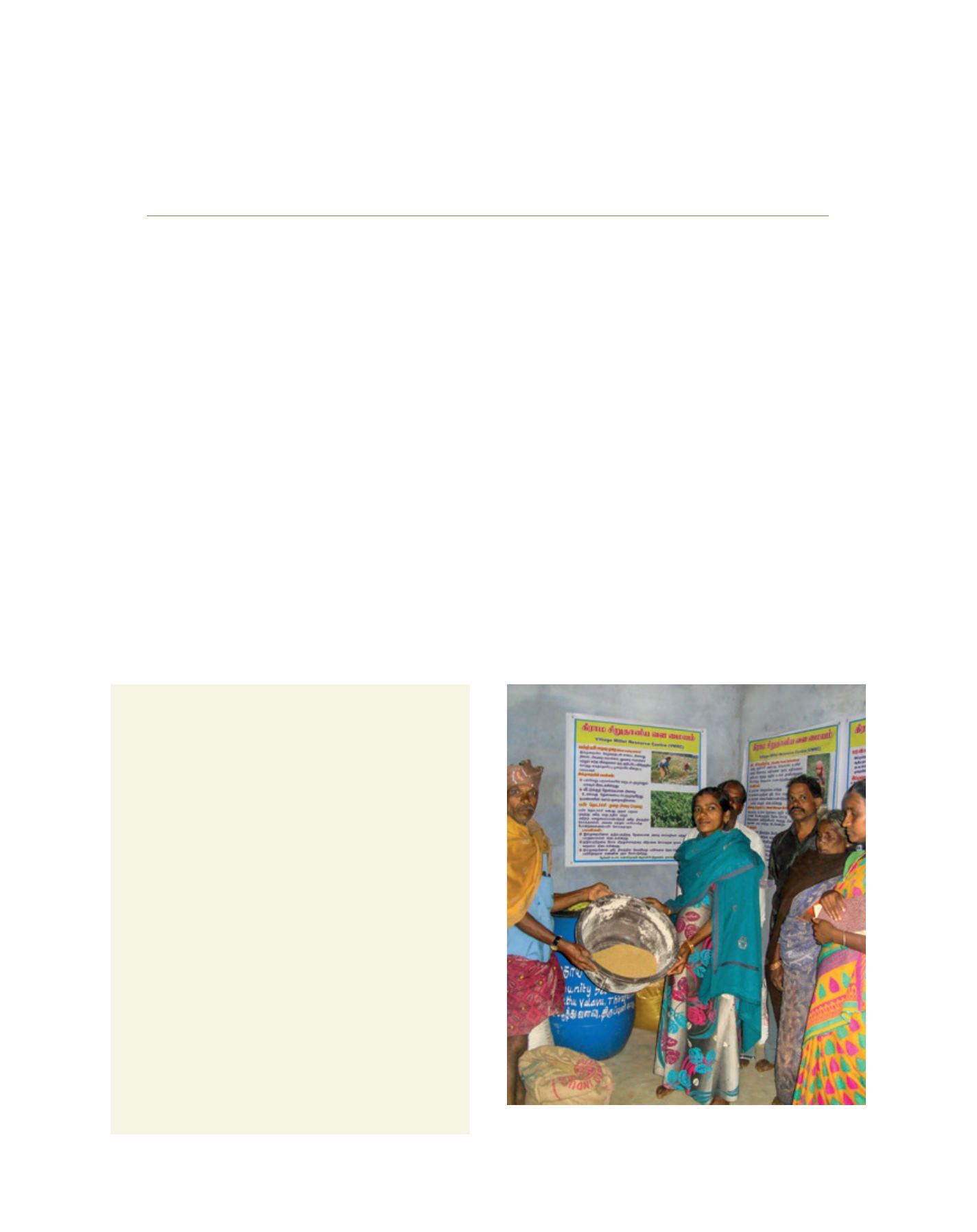

[
] 97
Community biodiversity management:
strengthening resilience of family farmers
E.D. Israel Oliver King, Saujanendra Swain and Ajay Parida, M. S. Swaminathan Research Foundation, Chennai
S
ocioeconomic and climate change poses severe risks
to the food security of subsistence farmers located
in marginal production conditions. The green revo-
lution has boosted global food production; at local level
however, small-scale farmers who live in marginal condi-
tions have benefited only to a limited extent. Those farmers
unreached by the green revolution are targeted with the
conservation strategy referred to as on-farm manage-
ment in agricultural production systems. The successful
pathways for working with those marginal farmers facing
crisis due to change are worth learning.
Community biodiversity management (CBM) emerged as
a methodology to realize the on-farm management of plant
genetic resources for agriculture. CBM integrates knowledge
and practices with social systems; it is driven by the local rules
of institutions and strengthens the capacity of rural communities
to take decisions on conservation and use of biodiversity in order
to secure community access to and control over their resources.
Various CBM practices nurtured by the MS Swaminathan
Research Foundation (MSSRF) in India in partnership with tribal
communities have been successful. These include:
• diversity fairs for awareness raising, documentation,
exchange and monitoring
• community biodiversity register for documentation,
information exchange and monitoring
• diversity blocks, diversity kits and participatory varietal
selection in millets, rice and pulses supporting access
and exchange
• farmer and participatory plant breeding promoting use
• community seed banks
• value addition of local crops and varieties, and associated
product chain development for sustaining use
• legal literacy for awareness on conservation of
agrobiodiversity
• building grass-roots institutions to manage natural resources.
Scarascia Mugnozza Community Gene Bank
Resource Center
The Scarascia Mugnozza Community Gene Bank Resource Center
(SMCGRC) was established with a munificent grant from the
Government of Italy at MSSRF. The community gene bank is a
medium-term storage facility where farmers are encouraged to
deposit their varieties of crops such as rice, small millets and grain
legumes with MSSRF serving as the trustee of deposited materials.
The accessions, depending on their stored viability, are periodically
regenerated. The seed samples may also go back to villages
when farmers need them or when specific seeds are not available
in villages. The data set is constituted as the Farmers’ Rights
Information System, with a view to facilitating access and benefit
sharing of farmers’ varieties in accordance with two important
national laws on agrobiodiversity, namely the Protection of Plant
Varieties and Farmers’ Rights Act (PPVFR) 2001 and the Biological
Diversity Act 2002.
In addition, SMCGRC facilitates the registration of farmers’
varieties under PPVFR and undertakes legal literacy among farmers
and grass-roots institutions. A total of 38 applications from Jeypore,
Odisha were submitted to the PPVFR Authority. SMCGRC has been
creating awareness and capacity building on legislation of PPVFRA.
The programme covered parts of legislation concerning on-farm
conservation, long-term off-site seed storage, development and
maintenance of farmers’ varieties, farmers’ rights, registration of
farmers’ varieties, benefit sharing, reward and recognition including
the Genome Saviour Award of the PPVFR Authority, the role of the
Panchayat institution in conservation of local biodiversity, and
access to local biodiversity and benefit sharing.
Self-help groups in 15 Kolli Hills villages have their own community seed
banks for regular seed production, distribution and exchange
Image: MSSRF
D
eep
R
oots
















